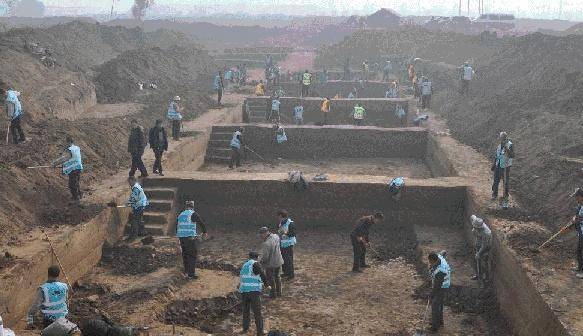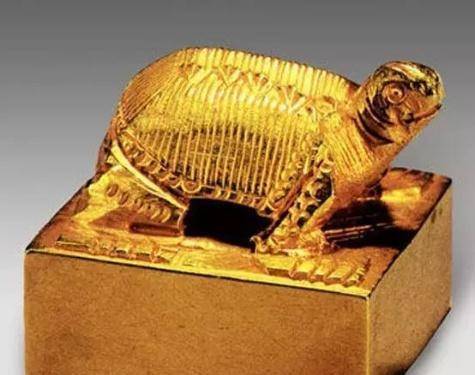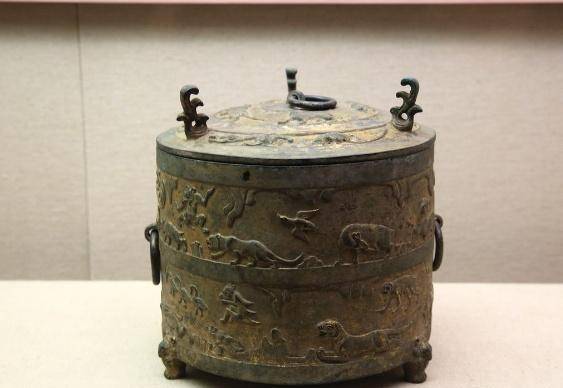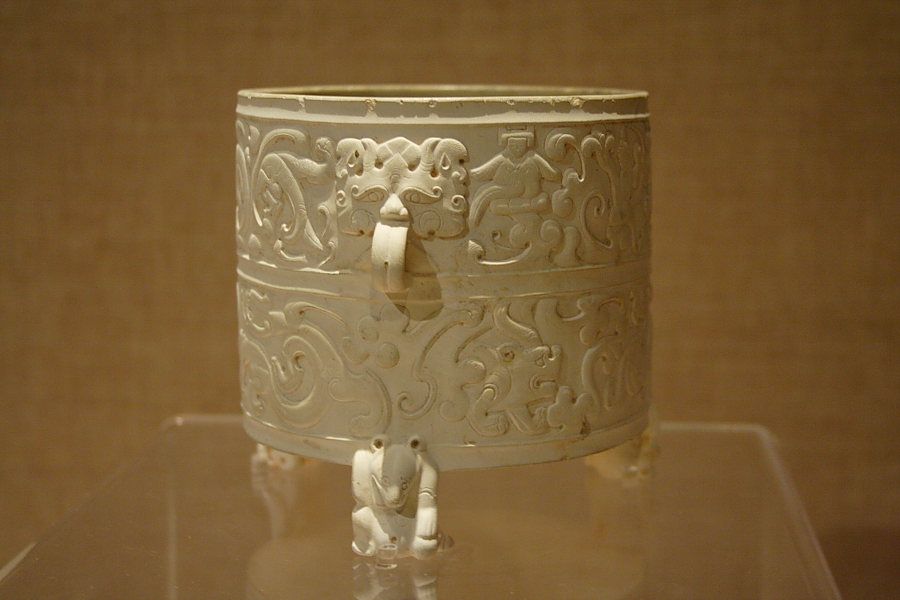Experts estimate the value of this artifact at more than 3,300 billion VND but still do not know what it is used for. What exactly is this object?
Unearthed an artifact worth trillions of dong, but today’s experts and archaeologists still cannot determine its true purpose. The story below is an example.
In 1990, while digging the soil, a farmer in An Huong district, Changde city, Hunan province (China) discovered a strange sinkhole. Realizing that it might contain cultural relics, this person immediately reported it to local authorities. After experts arrived and conducted a professional assessment, it turned out that this strange hole was the top of an ancient tomb.

Archaeologists excavated an ancient tomb in Hunan province in 1991.
Experts also discovered that the scale of this tomb is not small. However, it was not until 1991 that archaeologists officially conducted a large-scale excavation of this tomb.
Thanks to the careful preparation of experts, the excavation of this ancient tomb seemed to go very smoothly. Many precious cultural relics have been unearthed, including 78 items of gold, silver and jade. As usual, the archaeological excavation took place very successfully. Because archaeologists not only discovered that the owner of this tomb was Liu Hong (236 – 306), a famous general at the end of the Western Jin Dynasty, but also obtained a large amount of cultural relics. precious like gold seals, many bronze items, lacquer items…

The gold seal was found in a 1,700 year old tomb.
However, among the many cultural relics found in the approximately 1,700-year-old tomb, archaeologists are most interested in one special artifact. It was a cylindrical item made of jade. The reason for the attraction is very simple, because experts still cannot figure out the use of this object.
According to archaeologists, the item looks like a jade vase with a height of 10.5 cm and a diameter of 10.5 cm, skillfully and sophisticatedly crafted. Normally, most of the jade cultural relics that have been excavated are “flawless” and have translucence, which is considered the highest grade jade.
However, this jade vase is the opposite. Its material was made from a block of high-quality jade, but it was not made to be translucent. However, according to experts, this ancient vase is still a rare work of art in the world. Its most attractive point is the extremely unique patterns.
In particular, the upper part of the jade vase is delicately carved with complex but not messy lines, including cloud patterns, dragons, unicorns… The lower part is decorated into three groups with theme of war between fairies and dragons, tigers and dragons, dragons and bears. The bottom of the vase has three bear-shaped legs. These patterns reflect people’s desires at that time for immortality, longevity and wealth.

Close-up of the unique pattern on the ancient vase.
Finding artifacts made of jade is not uncommon in today’s archaeological discoveries. But experts say that, judging from the carving skills on this jade vase, it can be seen that it was made by the hands of famous master craftsmen thousands of years ago.
Its carving technique has even surpassed that of the Jin Dynasty. Therefore, experts deduce that this jade vase may have been a favorite “antique” of Luu Hoang when he was alive.
This also sparked a debate among experts about the true purpose of the jade vase dating back about 1,700 years. In fact, in shape, this vase is quite similar to two Han Dynasty wine warmers excavated in Shanxi province (China) in 1962. The purpose of these two vase is to store and Warm up wine. Two ancient wine vases from the Han Dynasty were both made of bronze.

The Han Dynasty wine vase was found in 1962 in Shandong (China).
Jade objects like the above jade vase with divine animal patterns only appeared during the Han Dynasty. Later, during the Three Kingdoms period, porcelain vases gradually replaced bronze and jade vases. However, bottles at this stage were mainly used for drinking wine.
This is the controversial point. Because ancient people often poured wine into a specific utensil or object such as a cup or bowl before drinking. Meanwhile, the overall height of this vase is 10.5 cm, too small to be a wine vase, but also too large to be used as a wine cup. Because of this, experts do not agree with the view that this artifact is a wine jar.
If not a wine decanter, then what is this delicate item used for?
What are more than 3,300 billion VND in antiques used for?
 The jade vase worth at least more than 3,300 billion VND is on display in the Hunan Provincial Museum (China).
The jade vase worth at least more than 3,300 billion VND is on display in the Hunan Provincial Museum (China).
It is suggested that some experts conducted more professional examinations of the jade jars with divine animal patterns at a time after being excavated. Finally, they found ink residue from thousands of years ago on the inside of the edge of the ancient vase. Therefore, these experts have speculated that this may be an item used to wash brushes in the past.
Although this argument seems reasonable, it still causes a lot of controversy, because of the origin of calligraphy. In fact, paper is an invention that appeared in the Western Han Dynasty. Before this period, ancient people often used bamboo and wooden cards to record documents. During the Western Jin Dynasty, although paper was widely used, it was used for writing and taking notes, but not commonly used for daily calligraphy practice.
Therefore, according to experts, there is little possibility that people in this dynasty used a jade vase as a brush cleaning tool.
Up to now, the debate about the true use of this jade vase with divine animal patterns has not been resolved.
However, this rare jade vase has been recognized as a national treasure. According to experts, although it cannot be compared with ancient bronzes, the vase dating back about 1,700 years ago has an estimated value of at least more than 1 billion yuan (equivalent to more than 3,300 billion VND).
On August 19, 2013, the jade vase with divine animal patterns was added to the list of antiquities banned from display abroad.





